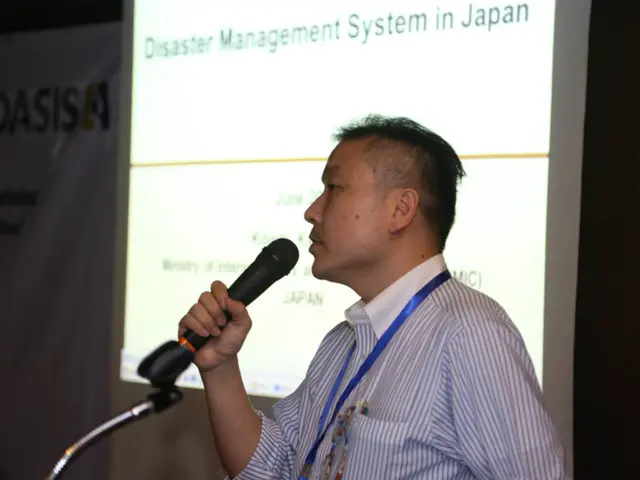Guide to Efficiently Managing Transactions in Microservices Using the Saga Pattern
In the realm of microservices, the Saga pattern emerges as an indispensable ally, addressing the challenges posed by managing transactions across multiple services. Here's a straightforward breakdown of this pattern, its benefits, challenges, and implementations - preparing you to conquer the complexities of distributed transactions!
Dancing with Distributed Transactions
Microservices offer an abundance of benefits, such as independent deployment, scalability, and technology diversity. However, managing transactions across these services is a significant challenge. Traditional ACID (Atomicity, Consistency, Isolation, Durability) transactions often prove unsuitable in a distributed microservices environment due to the overhead and complexity of distributed transaction management.
Consider an e-commerce application that builds on microservices: placing an order involves creating a new order (Order Service), processing the payment (Payment Service), reserving inventory (Inventory Service), and scheduling delivery (Shipping Service). If any of these steps fail, data consistency becomes a critical concern. The Saga pattern offers a solution, guiding these local transactions to ensure data consistency throughout the overall business operation.
The Ballet of Bits: What is the Saga Pattern?
Control
The Saga pattern is a design pattern used to manage distributed transactions in a microservices architecture. It is similar to a series of local transactions, each updating data in a single service. The Saga orchestrates these local transactions to complete an overall business operation. If a local transaction fails, the Saga implements a series of compensating transactions to restore the system to a consistent state.
Decentralized
For instance, imagine ordering a pizza: placing the order (Order Service), paying for it (Payment Service), and initiating the food's preparation (Preparation Service). If, for whatever reason, the Preparation Service fails (e.g., runs out of ingredients), the pizza place doesn't leave you waiting indefinitely. Instead, they refund your money (Payment Service compensation) and cancel your order (Order Service compensation).
Centralized
Key Concepts in the Saga Pattern
- Local Transaction: An atomic operation performed by a single microservice, updating its database.
- Compensating Transaction: A transaction that reverts the effects of a previous local transaction, restoring the system to a consistent state after a failure.
- Saga Execution Coordinator: A component responsible for managing the Saga, ensuring that all local transactions are executed in the correct order, and coordinating compensating transactions to resolve failures.
Complexity
Two Steps to Implementation: Choreography and Orchestration
Simple for simple sagas, complex for complex sagas
There are two primary ways to implement the Saga pattern:
More complex initially, simpler for complex sagas
The Dance of Decentralization: Choreography-based Saga
In choreography-based Saga, each microservice is responsible for knowing when to participate in the Saga and what actions to take. Services communicate with each other through event exchanges. If a service fails, it triggers a compensating event that causes other services to roll back changes.
Coupling
The Conductor's Wand: Orchestration-based Saga
Loosely coupled
In orchestration-based Saga, a central orchestrator controls the whole Saga execution. The orchestrator instructs each microservice when to execute its local transactions and compensation transactions. The microservices simply follow the orchestrator's commands.
Tightly coupled to the Orchestrator
Making the Call: Choreography vs Orchestration
The best approach depends on the complexity of the Saga and the desired degree of decoupling. Here's a quick breakdown of each approach:
Dependencies
| Feature | Choreography | Orchestration || --- | --- | --- || Control | Decentralized | Centralized || Complexity | Simple for simple sagas, complex for complex sagas | More complex initially, simpler for complex sagas || Coupling | Loosely coupled | Tightly coupled to the Orchestrator || Dependencies | Potential for cyclic dependencies | Reduced risk of cyclic dependencies || Error Handling | Distributed, can be harder to track | Centralized, easier to track |
Potential for cyclic dependencies
Real-world Applications: Putting the Saga Pattern to Work
Reduced risk of cyclic dependencies
The Saga pattern is widely applicable across various industries and situations:
- E-commerce: Managing orders, payments, inventory, and shipping.
- Banking: Processing financial transactions like fund transfers and loan applications.
- Travel: Coordinating flight, hotel, and rental car bookings.
- Supply Chain Management: Overseeing the movement of goods from suppliers to customers.
Error Handling
Putting It into Practice: A Look at Saga Implementations in Code
Distributed, can be harder to track
This section provides a code example of an orchestration-based Saga using Spring Boot (note that this example is a simplification of a real-world implementation).
Centralized, easier to track
Challenges and Considerations
While the Saga pattern is powerful, there are challenges to consider:
- Complexity: Implementing and managing sagas can be complex, especially for large, intricate systems.
- Eventual Consistency: Sagas provide eventual consistency, meaning temporary data inconsistency before becoming consistent.
- Debugging and Monitoring: Debugging and monitoring sagas can be challenging due to the distributed nature of transactions.
- Compensation Logic: Defining and implementing compensating actions, especially with complex business logic, can prove challenging.
- Idempotency: Ensuring idempotency of transactions and compensation actions is vital to maintaining data integrity during retries.
Addressing these challenges necessitates careful planning, design, and implementation. Using appropriate frameworks, implementing robust error handling, and establishing clear monitoring strategies are crucial for successful saga implementation.
Conclusion
With the Saga Pattern at your disposal, you unlock powerful capabilities for managing distributed transactions in microservices. Initially, it might seem formidable, but with a step-by-step approach and hands-on practice, it becomes a valuable tool in your arsenal. Start with simple, local sagas or even confine it to a single service, such as order processing. As you become more familiar with it, scale up to more complex workflows and systems. Lastly, remember that constant monitoring, careful evaluation, and staying abreast of new patterns and technologies ensure your architecture maintains its resilience and efficiency as your microservices evolve. Welcome to the wonderful world of sagas!
For further insights, check out these related articles:
- Business IT Alignment: Why It Matters
- Simple Guide to Understanding Basic Security Risk Assessment Fundamentals
- Secure Access Service Edge (SASE): Explained - A Simple Guide
- AI Agent: Guide to Automate Your Tasks Efficiently
1.In microservices architecture, the Saga pattern is crucial for managing transactions in a technology-diverse environment, offering a solution to maintain data consistency across multiple services, especially when using distributed transactions.
- Leveraging the Saga pattern within cybersecurity context, it can help maintain data integrity across various services, such as authentication, authorization, and user management, due to its ability to coordinate local transactions and recover from failures in a distributed environment.








